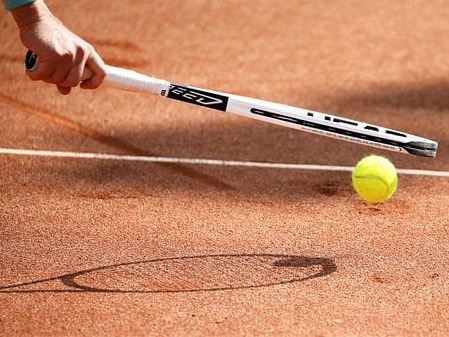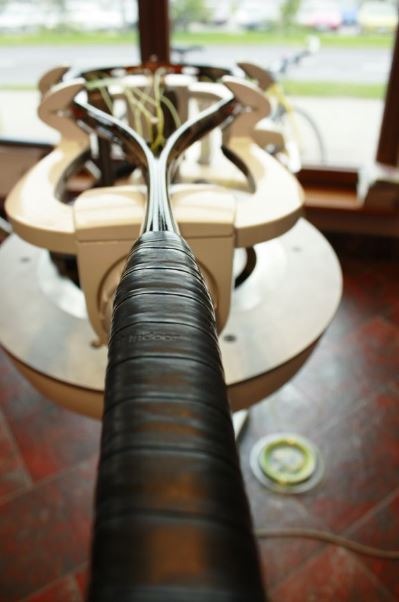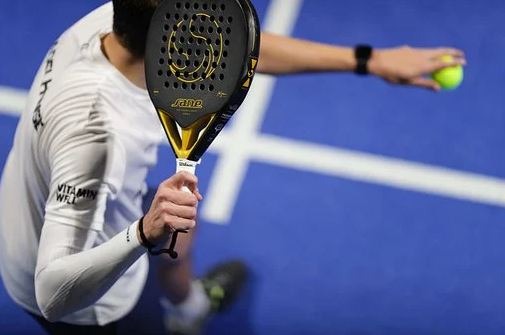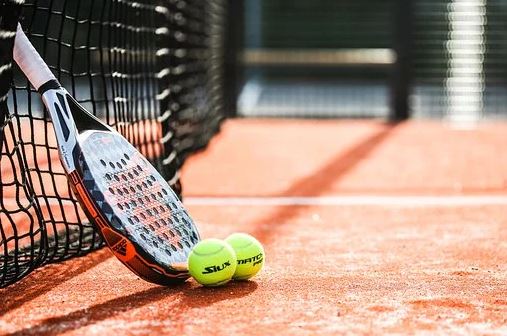Tennis is a fun and challenging sport; it’s played for recreation, practice, and professionally as well. Some may take it up as a way to stay active and fit, while others may be more competitive in their play. Whatever our approach to tennis may be, there are certain factors to consider so that we have an enjoyable and comfortable experience.
Having the right kind of racket is certainly a requirement for any tennis player, but we also need to consider all that goes into its making. The strings should be tight enough for proper playing, while the handle needs to be comfortable and grippable. This is where tennis grips come in.
What Are Tennis Grips?
When we talk about tennis grips, we may have to specify the exact context. There are several types of grips, such as dry, absorbent, tacky, slip-resistant, perforated, etc.
A tennis grip can also refer to the way in which players hold their rackets. We can read up about these types of tennis grips explained, but the focus here is about the materials used in such grips.
Why Are Tennis Grips So Important?
Many tennis pros and manufacturers will tell us that the tennis grip is a sadly neglected part of the racket as far as the market is concerned. Even pro shops may have a lot of variety for the strings of a racket, but not so much when it comes to the grips. This is unfortunate, since the handle is where the player directly connects with the racket.
Whether one is a recreational player or a professional one, it’s essential to have a grip in the correct size and comfort level. This is not just a matter of playing a good game, but playing it safely and without health risks.
If the grip is too large or small, it will require the tennis player to squeeze very tightly. This practice will put a lot of stress on the elbow, forearm, and wrist. The same issue occurs when the material of the grip is too slippery or worn out to offer a decent hold.
Types of Tennis Overgrip Materials
A tennis grip might be made of leather or some sort of synthetic material. However, we also need to look at the kind of overgrips used on the racket handles. An overgrip is a soft, cloth-like, sometimes padded tape that’s wrapped around the racket’s grip. These types include:
1. Tacky Tennis Grips
Tacky or sticky grips are usually meant to add to the comfort of the racket hold. These grips are the most common kind and are also used at the professional level. Big names in the tennis world such as Nadal, Djokovic, and Federer all play with a tacky grip. The tacky grip is also for casual players or anyone who doesn’t sweat too much while playing.
There can be different levels of thickness with this grip, as well as its potential to absorb water and/or sweat when in use. The thicknesses may vary from 0.5 mm to 0.75 mm.
Thinner grips help the player to get a good feel of the racket; a thick one is more comfortable due to its shock-absorbing properties.
2. Dry Tennis Grips
If a player is naturally prone to a lot of sweating or is playing in a hot/humid climate, a dry tennis grip is the need of the hour. These groups may not be the comfortable choice, but they do prevent the racket from slipping around in the player’s hand.
There are some tennis players who won’t be able to play without a dry tennis grip.
3. Perforated Tennis Grips
The name here is self-explanatory; the tape for these groups is perforated. It has tiny holes, somewhat like a mesh material that is also comfortable to hold. While perforated grips may not be as common as the first two kinds, they do give the best of both worlds to a tennis player.
Such material is able to provide some stickiness to make the grip firmer. At the same time, its holes allow the hand to breathe, absorbing sweat and water if required. Unfortunately, they aren’t the comfiest option and may not be very slip-resistant.
Overall, a perforated material for a tennis grip is a good idea for players who sweat a little but still want to have some feel in their grip without compromising on comfort. Overall, the thickness of a grip will affect the performance, comfort level, and durability of any tennis grip.
About Overgrips
Most tennis overgrips are now available in packs of three. They’re a much cheaper option than getting a whole replacement grip. Plus, this sort of packing is convenient for tennis players who have to charge their overgrips frequently. There are also larger packs available, with 10 to 30 units each. Buying overgrips in bulk will drive the per-unit price down further.
While it is important to replace the overgrip consistently, recreational players may not have to do this as often as professional players do.
Materials of Replacement Grips
A replacement grip in tennis refers to the base material of a racket’s handle that a player puts in place of the original one. Most rackets that come from a factory these days are usually of a synthetic material. Some players may want the traditional option of a leather grip or a syringe synthetic material. To the end, they seek a replacement grip.
The oil and sweat from a player’s hands may wear down the original base grip too quickly, which is why an overgrip is sometimes necessary. Even so, the original grip will wear down over time and require replacement.
If someone is confused about whether to go for a synthetic or leather grip, looking at the pros and cons of each choice might be a useful practice:
Advantages of Synthetic Grips
There are several cushioning levels available for synthetic grips, which means that players can choose which one is best for them.
Synthetic grips are more easily available, come in a wide range of options regarding colors, thicknesses, tackiness, textures, control level, etc. There are even ribbed and non-ribbed models so that every player can choose whatever suits them best.
Such grips also perform well even without any overgrip. If any tennis player doesn’t want to remove their overgrip and put on a new one on a regular basis, they might want to consider a synthetic base grip. Finally, synthetic materials may just be more comfortable, especially if the player has arm injuries.
Disadvantages of Synthetic Grips
Pressure from the player’s hands will quickly wear synthetic fibers down. This will necessitate a new replacement relatively quickly. If the material is not perforated, synthetic grips can also lead to a slipper hold in case of too much humidity.
Advantages of Tennis Leather Grips
The base grip of a leather option is more stable and uniform than that of synthetic materials. Plus, leather only gets better with time and use as long as the player takes care of the grip properly.
A leather grip is probably the best choice for those who want a firm holding experience for their tennis games. For a long time, leather grips were the first and best choice for most tennis players. However, there have been quite a few developments in the area of rackets, with synthetic grips gaining better quality, traction, sweat absorptions, and comfort at lower cost.
Disadvantages of a Leather Grip
While there’s a lot to be said for using a leather tennis grip, the main loss is that of comfort. Leather is not a forgiving material, especially when it’s new. Those who are used to softer grips might be disturbed by the shocks they feel when striking the ball or just moving the racket. They may also find their hands tiring or hurting more easily than before. For those who don’t use an overgrip regularly, leather wouldn’t be as tacky or sticky as synthetic fibers are.
Finally, if a player does want to change from a synthetic to a leather overgrip, they should keep in mind that their racket will be a bit heavier than before–by about ten grams or so. This could change their swing depending on where the weight change is located. To counteract this issue, we should look up some tips on how to get better at tennis overall.
Preference of Professionals
Most tennis professionals, even the acclaimed Roger Federer, prefer to wrap an overgrip on a leather tennis grip on their racket. It’s evident that the advantages of a leather grip are valuable to those who prefer the more traditional feeling of a tennis racket. The players can better feel the edges or bevels of the handle, which allows them to change the grip rapidly and accurately. Plus, leather allows vibrations from both handle and frame to travel to the player’s hands, which some say makes for a better awareness of the game.
Conclusion
The two major grip material types are synthetic and leather, so that is what the decision ultimately narrows down to. If comfort is the highest priority, a synthetic grip is probably the best option to go for. Synthetic materials will also reduce the need for frequent re-gripping.
The other main option is leather, which is best for players who want the maximum feel. They might have to swap grips regularly, but the experience will hopefully be worth the effort. However, they do have to remember that there’s only a limited number of leather grips available, whether we look online or in physical stores.
There are many other accessories to consider before a tennis player is ready for a game. Headbands and wristbands might be necessary for some, but a hindrance for others. It may be useful to read up on the upsides and downsides of wearing wristbands and headbands.







